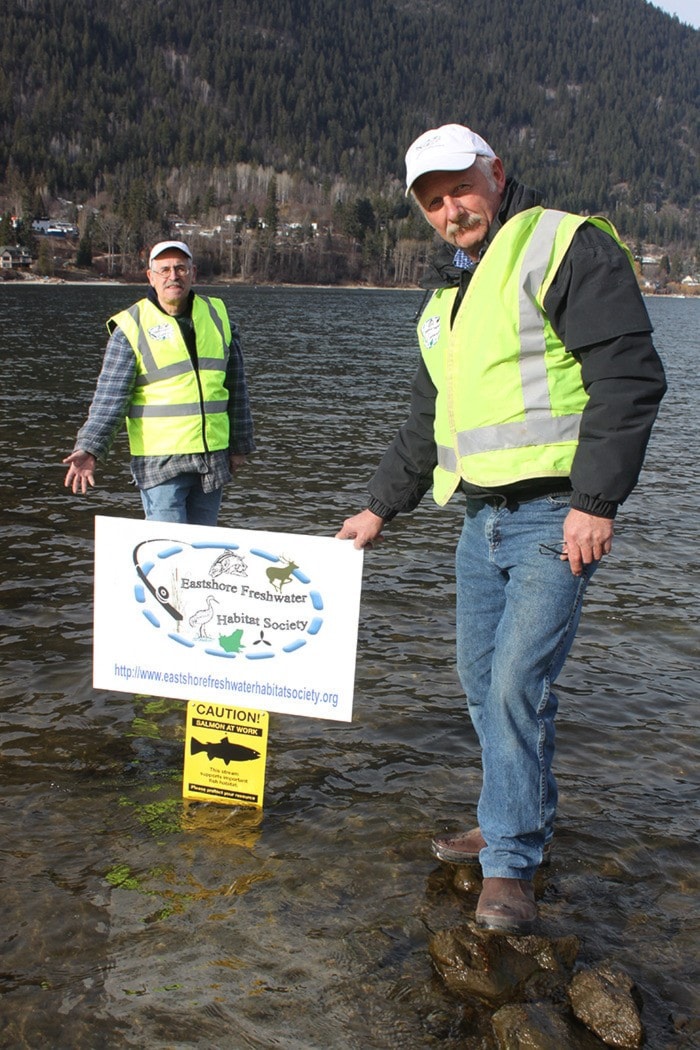Local fishing enthusiasts expressed alarm at the dropping number of kokanee salmon in the Kootenay Lake fishery this year, including Balfour businessman Randy Zelonka. He just wasn’t sure what to do about it.
“There are a thousand conclusions out there,” he said. “People are talking about excess fertilizer, there have been mentions of algae blooms. The biologist believes it’s too many rainbow trout from the main lake, and they’ve been eating the kokanee, but now there’s none left to feed them. Basically, they’ve eaten themselves out of house and home.”
One of the most alarming things, according to Zelonka: this year’s Kootenay Lake BC Family Day Fishing Derby, which included a $10,000 prize, had to be cancelled due to declining stocks.
At a public meeting in Balfour in February attended by 300 people, ministry staff seemed a bit taken aback by the large turnout, cautioning people to be respectful with their questions. But they needn’t have worried. The dozens of polite questions reflected a roomful of knowledgeable, thoughtful, experienced residents committed to the lake and the fish.
“People do have the capacity to understand technical decisions,” said Josh Smienk, who organized the meeting for the Balfour and District Business and Historical Association. “People want to know why decisions are made. It is so personal for them. It is their own backyard.”
Government officials, headed by biologist Jeff Burrows, responded to questions with charts, graphs, and historical details. They often admitted they didn’t know the answers to some of the hard questions.
The essence of the problem seems to be the balance between predator (Gerrard trout) and prey (kokanee). The current situation is characterized by a shortage of older kokanee, an average abundance of kokanee fry, Gerrard trout abundance declining from a recent record high, but a reduction in their size, and a high abundance of young Gerrards.
The result seems to be a reduction in prey because of too many predators, and a reduction in the size, condition, and abundance of predators because they don’t have enough to eat.
In April, the province responded to public pressure by placing a moratorium on kokanee fishing on the main lake (although not on the West Arm) and increasing the limit on Gerrard trout to four, in an attempt to balance things out by decreasing predator numbers and giving the prey a chance.
In August, the BC government suspended angling in rivers and streams of the southern Kootenay due to warm water temperatures and low flows. Virtually all fishing was suspended in streams and rivers in an area south of Nelson from below Lower Arrow Lake in the west across to the Kootenay River.
“We don’t do closures very often or lightly,” said regional natural resources manager John Krebs. “I have not seen it like this before. I have been in the region for 25 years, and there were some dry years in 1985 and 2003, but in terms of early high temperatures, we have never had such a long hot spell that early in the season in several decades. So it is really unusual.”
Harvey Andrusak, a longtime Kootenay resident, retired fisheries biologist and former director of fisheries for the province, said the necessity of the closure is “a reflection of how precious and important the fishery is.”
“This has never happened before, not in my lifetime,” he says. “Low flows, high temperatures — Kokanee Creek is the lowest I have ever seen it, and the kokanee spawners coming into the stream shortly could have some unusual mortality.”
